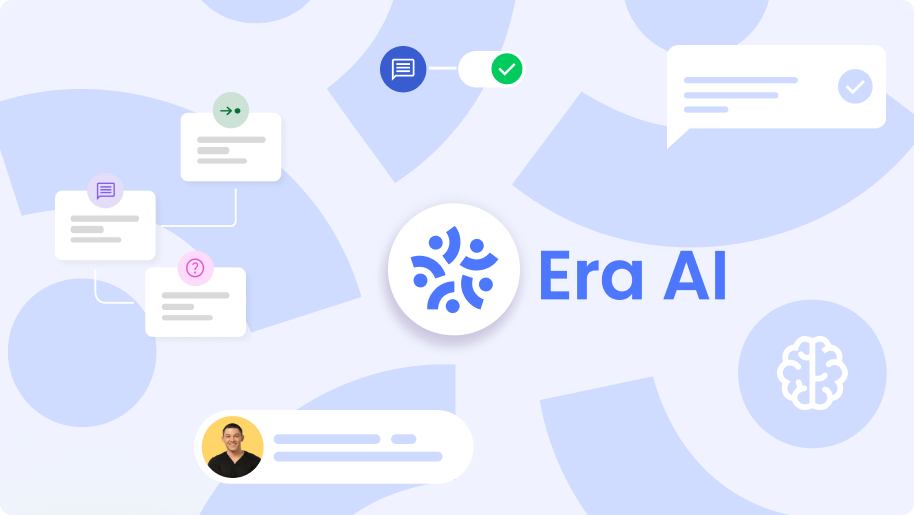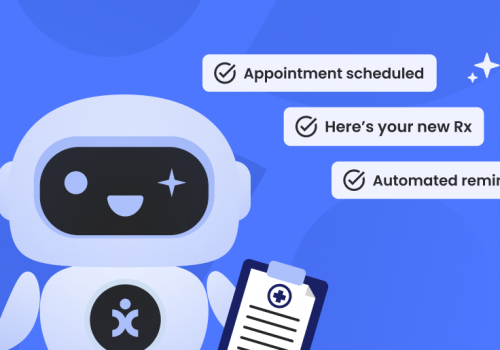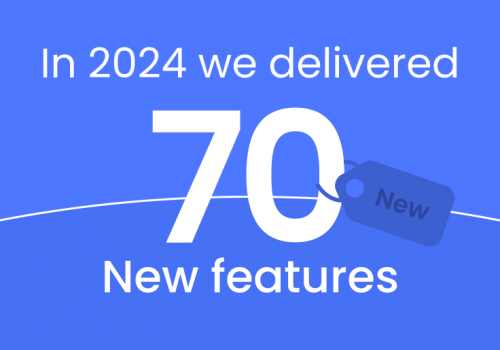Mapping Customer Journey. Having a successful business in 2020 is all about customer experience. This is the area that businesses are now competing with each other to attract and secure the most customers and boost their profits. The key to providing excellent customer service lies in your approach. You need to engage, nurture, and convert consumers. This is easier said than done, but with a strategic and methodical approach, you can make this happen.
With that in mind, let’s take a look at 10 steps you should when mapping the customer journey.
What Is Customer Journey Mapping?
Customer journey mapping is all about visualizing the customer’s journey in a way that helps you create actionable goals. You want to put yourself in the mind of the customer and experience your business as they experience it. From inside the business, it can be difficult to see it the same way customers do from the outside. We’re often too close to the operation to see it as it really is. You probably know exactly how to navigate your website because you see it daily, and perhaps you even built it yourself. This makes it difficult for you to see where any confusion may lie.
Customer journey maps are a visual representation of your customer’s journey with your business. They can be used as a reference point for yourself or other staff when you are making business decisions. All decisions must keep the customer journey in mind because the customer journey directly relates to customer experience.
Why Customer Journey Mapping Is a Great Idea:
- It helps you create a more efficient customer journey. Do your customers take 3 steps to get to a place when you only intended them to take one?
- It helps create a more effective customer journey. The route your customers take has to make sense to them. We all navigate sites differently or respond better to some things than others, and that’s fine. The key is to create an experience that is overall effective and captures most of the wants and needs of your customer base.
- It helps you understand your customers better. To implement an effective customer journey, you need to understand your customers. This means you understand how they behave, what they want, and more importantly, what they don’t want. This is an important part of running a successful business, but it’s often missed by business owners who are too eager to create the perfect journey for them (rather than the customer).
- It helps you create better goals going toward. By taking a more scientific approach to your customer journey, you’re brought closer to the real things that make your business work. You can make changes and assess their benefit in real-time. This can then drive your decisions and goals going forward.
- It helps you plan the rollout of future products. Once you have a clear depiction of how the customer experiences your business, you will have a better focus when it comes to how, when, and where to market your new products.
- It helps you identify customer pain points. Customer pain points can cost your business. Before setting out on your customer mapping exercise, you might not realize just how many pain points there are for your customers, or how severe they are.
- It helps you innovate. Innovation doesn’t happen by accident, and successful innovations certainly don’t happen by accident. You need to have a robust and thorough understanding of your customer’s experience to know what great product you can offer them next.

10 Customer Journey Mapping Tips You Should Follow
Getting your customer journey right is crucial. While businesses of the past would compete on products or price, the businesses of today are completing with experience. The digital revolution has been instrumental in making this change because businesses now have the tools to create seamless digital experiences for customers in a way that wasn’t possible in the past.
Additionally, customers now have a different relationship with the businesses they buy from. Customers now understand that they are valuable to businesses and have the power to choose where they spend their money. This has always been the case to some extent, but it’s especially true today due to the increasingly global nature of business. Before the internet and before digital, customers were restricted to choosing between a select few local or maybe even national businesses. Today the whole world is up for offer.
This has created a fiercely competitive landscape for businesses in the digital age and also allowed customers to leverage their power to demand more from businesses. This has led to the high expectations customers have in 2020. And getting your customer journey right is the key to meeting these expectations.
1. Know What You Want to Achieve
Don’t jump straight into customer journey mapping before deciding what you want to achieve from it. If you do, you risk missing something critical or confusing your employees. Do you want to create more effective cohesion between your teams? Do you want to get more users buying through your website? Do you want to increase click-throughs from email marketing? Where are the areas that you think your business is failing to deliver to customers? Are there teams in your business that you think need to be closer to the customer journey? These are all questions you should be asking.
2. Create Buyer Personas
This isn’t a one or the other type of business activity. You need buyer personas to create an accurate customer journey map and to implement improvements to the customer journey. It’s extremely unlikely that your business only has one profile of buyer. It’s much more likely that your business has many types of buyers, and it’s your job to document, analyze, and understand these buyers and their motivations.
Your website might work fine for tech-savvy Millennials and Gen Zeds, but not so well for older generations who are more resistant or less experienced to some tech solutions. You can’t design your website for just one type of buyer.
Different types of buyers have different ways of doing the same thing, but they also have different goals. Without creating personas, you risk falling short of meeting the expectations of these groups.
3. Split Your Map into Sections
It’s good to have a high-level view of the whole customer journey, but you should also have a more detailed map of the different stages of the customer journey. For example, what happens before the customer comes to your website? Does the journey begin with your Google Ad? Does it begin with your Twitter campaign? What happens after they have completed a purchase? Do they get a confirmation email? What about further in the future? How often will you send marketing emails to the customer after a purchase?
4. Identify Customer Touchpoints
This is the foundation of your customer journey. Touchpoints are anywhere that the customer interacts with your brand. This could be a physical store, a website, your customer service line, Live Chat, online reviews, or Ads. Research has shown a direct correlation between the number of touchpoints and the likelihood of a customer buying from a business. Businesses with more touchpoints get more customers.
Identify all of your touchpoints first before starting your customer journey map, this way you can build an accurate picture of how customers experience your business. This will also help you decide whether you need more touchpoints, and if so, where to include them.
5. Present Onstage and Offstage Actions Separately
When it comes to mapping your customer journey, you will have to document both onstage and offstage experiences. It’s important to separate these elements in your map so that it’s clear to the reader.
An onstage experience is one takes place in front of customers, or rather, something the customer sees or experiences. For example, let’s say the customer reads your online newsletter and then decides to sign up for your email list so they can be notified each time there’s a new newsletter. Reading the post and signing up is considered an onstage event.
An offstage event is the actions that happen behind the scenes that the customer doesn’t have sight of. In the newsletter example, when the user submits their details into the newsletter form, an offstage action will be triggered that adds them to the mailing list.
6. Don’t Do It Alone
To create an accurate customer journey map, you need to include people from all over the business. People from different areas of the business will be more familiar with different touchpoints, how they work, and how customers experience them. For example, your customer service team will be invaluable in creating your map because they speak to customers every day and understand their frustrations clearly.
7. Think About Customer Emotions
It’s a good idea to capture customer emotions on your journey map. This can be a simple emoji or quick sketch of the emotion the customer feels as they move through the journey. You can assign negative emotions to areas where the customer hits a pain point or experiences more friction, and positive emotions when the user is rewarded for their actions, like when they receive a confirmation email after purchase.
Your customers’ emotions should be at the forefront of your mind when designing anything that consumers interact with. With the market being so customer-focused, you need to maximize positive emotions and minimize negative emotions to set yourself apart. Customers will remember if your business caused them a headache, and they will choose a different option the next time they need a similar product.

8. Set Realistic Goals
Creating a customer journey map is a great way of bringing clarity to your business goals. Sometimes we need to shift our focus to one area to make some much-needed improvements. Sometimes there’s a bunch of areas that need more focus and revision.
When you’ve created your customer journey map and decided on the areas that need focus, it’s important to set realistic goals. Don’t try to do everything at once. Too many changes at once can lead to a chaotic experience for customers. You might also find that these new changes create new and unforeseen issues.
Additionally, you want your customer journey map to be future proof. It should be something that you can add to and change over the years as your customer journey evolves. If you change too many things at once, you’ll probably have to create an entirely new map shortly after creating the first.
The goals you set should be clear, straightforward, and timely. Know what you want to achieve, and when you want to achieve it.
9. Clearly Mark the Intensity of Each Touchpoint
All touchpoints are important, but they’re not all equal. Some touchpoints carry more weight because customers experience them at key moments in the journey that can make or break their experience. The smartphone version of your website landing page would be considered an important touchpoint because if it’s poorly designed, many consumers will click straight off it. An Author Bio on your blog is still important because it creates a sense of authority and responsibility to your content, but it’s not as important as your contact form.
You can mark the intensity by creating a scale and assigning a number to each touchpoint. A 1-5 or 1-10 scale will work for most businesses.
10. Make Sure It Makes Sense to the People Using It
You can create customer mapping journeys with excel spreadsheets, word processing documents, flashy visuals, or even on post-it notes on a whiteboard. Whatever you choose, it has to make sense to the people using it.
Present the information in an easily readable way so that employees can quickly scan the map and find what they’re looking for.
Get Started on Your Customer Journey Map
You now have everything you need to start mapping your customer journey! You should keep this blog handy and refer to it as you work your way through the process so you can create an accurate and effective customer journey map.




















